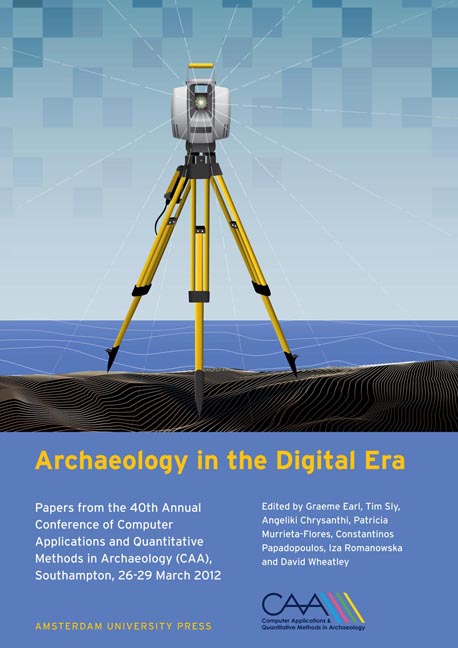 Archaeology in the Digital Era
Archaeology in the Digital Era Beyond Inspire: Towards Delivering Richer Heritage Data in Scotland
Published online by Cambridge University Press: 16 February 2021
Summary
Abstract:
Through INSPIRE, public bodies are publishing metadata, view and download services for datasets, mandated by the European Union, to an agreed timetable. Mandated datasets help focus attention on priorities but INSPIRE should be seen very much as a catalyst rather than a checklist to unlocking richer archaeological data. Recognising the potential for publishing information as view or Web Map Services (WMS), the Royal Commission on the Ancient and Historical Monuments of Scotland (RCAHMS) has released a point dataset for the National Inventory and is finalising a WMS for its aerial survey mapping programme. In creating remote services, there is a need to consider the user who is often unfamiliar with the complexities of the data presented. Through Defining Scotland's Places, RCAHMS is undertaking the definition of the site extents to assist the end user, including archaeologists and land managers in better understanding the complex information we curate.
Keywords:
National Inventory, INSPIRE, Spatial Data Infrastructures, Web Map Services
Background
In 2007 the European Parliament published Directive 2007/2/EC establishing an Infrastructure for Spatial Information in the European Community (INSPIRE) in the official Journal of the European Union (European Communities 2007). The Directive covers 34 Spatial Data themes, grouped in three Annexes, including the Protected Sites theme in Annex I. which covers aspects of the historic environment. The INSPIRE Directive was adopted as a Statutory Instrument by both the United Kingdom and Scottish Parliaments in 2009 with a view to developing the metadata, Web Map and Web Feature Services, to an agreed timetable, over the next decade. The Scottish Government and Geographic Information community in Scotland both recognise that although the mandated datasets are helpful in focusing attention on priorities within the context of creating a Scottish Spatial Data Infrastructure and delivering efficiencies across all tiers of Scottish Government, the INSPIRE Directive should be seen very much as a catalyst rather than a checklist.
Adopting INSPIRE
There are two principal drivers for implementing INSPIRE. The legislative approach compels organisations responsible for mandated datasets to publish datasets.
- Type
- Chapter
- Information
- Archaeology in the Digital EraPapers from the 40th Annual Conference of Computer Applications and Quantitative Methods in Archaeology (CAA), Southampton, 26-29 March 2012, pp. 313 - 319Publisher: Amsterdam University PressPrint publication year: 2014
